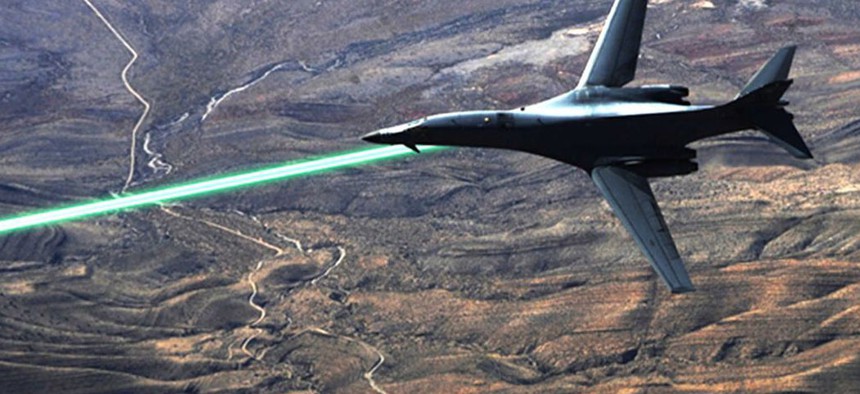DARPA moves ahead with plan to put anti-missile lasers on drones
The agency adds to a contract with Northrop to develop a small system that can be mounted on manned and unmanned aircraft.
The Pentagon, which has put a lot of effort in recent years into developing laser weapons, is continuing with a program intended to mount high-powered lasers on manned and unmanned aircraft to defend against heat-seeking missiles.
The Defense Advanced Research Projects Agency has awarded Northrop Grumman a $10.4 million contract modification under what’s called its Endurance project. The modification follows earlier contracts awarded to Northrop in 2013 and 2014, as well as a 2013 contract to Lockheed Martin in 2013, for work on the project.
Laser weapons hold a lot of appeal for the military for a number of reasons. Cost is one factor—it costs a couple dollars to fire a laser as opposed, depending on the weapon, potentially a million dollars or so for a traditional interceptor missile. Lasers also would save on storage space for ordnance, while never running out of ammunition as long as power is available.
The challenge has been building lasers with enough destructive force while handling the cooling requirements. Early efforts with chemical-based lasers were abandoned because their use was unwieldy and potentially dangerous. Military researchers and contractors shifted to solid-state lasers that were efficient, but produced beams with a range of up to about 50 kilowatts. Officials have said that 100 kilowatts or more was necessary for a weapons-grade device.
The Navy’s LaWS, for Laser Weapon System, which was deployed in 2014 aboard the USS Ponce in the Persian Gulf, was touted as being effective against drones and small boats, though its power reportedly was 30 kilowatts.
But the power of these laser, or directed energy, systems is improving. The Navy this summer said it was preparing to test a 150-kilowatt system, and the Air Force Research Laboratory also has tested 150-kilowatt system known as HELLADS, for High-Energy Liquid Laser Area Defense System, as part of a program that was co-funded by DARPA. The Army and Marines also are working on vehicle-mounted systems that could be used against drones and other targets.
Endurance grew out of DARPA’s Excalibur program, which developed a 100-megawatt system using a 21-element optical phased array that reduced the size, weight and power requirements for a laser. Now, the agency is looking to further miniaturize a system that can be pod-mounted on a manned or unmanned vehicle and use a lightweight beam director to track and engage incoming targets.
Under the latest modification, work is expected to be completed by July 2017.




